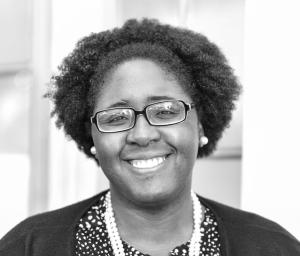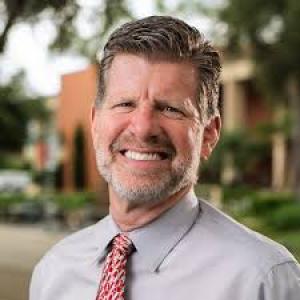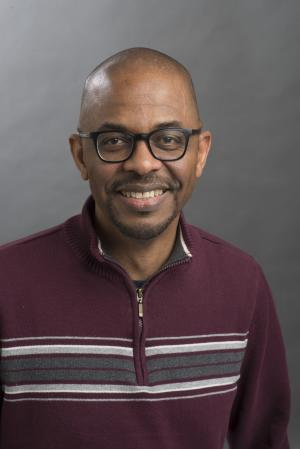Resources

On October 22, 1939, six weeks after World War II had broken out, C. S. Lewis preached to a large crowd of Oxford University students, who were wondering what the point of the academic life might be at that time of international emergency. His address was titled, “Learning in War-Time.” My meditation this afternoon will be much shorter than Lewis’s great sermon, and to some extent dependent on its content. But in view of my present audience and the current world situation, I’m flipping the focus and the title. I’m calling this, “Teaching in Plague-Time.” Speaking as a teacher, I’ve been haunted since the coronavirus pandemic broke out by two rather strong fears. Maybe you have, too. I want to say a few words about each of these fears and to encourage us to face and conquer them. My first fear is that I won’t be able to teach effectively this quarter given that I’ll be using technologies I haven’t yet mastered. I’ve been feverishly revising my PowerPoints, glumly redesigning my Canvas sites, and fiercely cursing the intricacies of Zoom and Panopto. Countless times I’ve asked myself, “How can I possibly teach under these restrictive conditions? How will I ever figure out these complicated programs?” As a teacher, I’ve always been the “sage on the stage,” not the “guide by the side,” but these days I feel more like the “rube on the tube.” I feel silly wearing headphones. I fumble with the Zoom controls. I look at the screen instead of the camera and realize I’m watching myself looking away from myself. Understandable as this fear of pedagogical failure may be, it springs from a deeper source than shame for my technological ineptitude. It springs from the subconscious assumption that my professorial persona is more important than the intrinsic value of the subject matter I am called to teach, more important than the spiritual and intellectual needs of my students. This is more than wrong. It’s sinful. My performance anxiety exposes the vanity that lurks beneath my ineptitude. My conscious fears may subside as my competence improves in coming weeks. But I must repent of my need for my students’ admiration. If you’re in the same boat, maybe these emergency measures will give you, too, an opportunity for spiritual healing. My second fear is that the material I will be teaching this quarter will seem wholly irrelevant to my students given that it seems so far removed from the pressing needs of our time. What have the decrees of the Sixth Ecumenical Council to do with the shortage of ventilators and facemasks? Am I doing no more than offering them a brief diversion from the daily news, or feeding their hope that things will soon be back to normal, or contributing my mite to the completion of a credential they need before venturing into the “real world”? This second fear springs not from my vanity, but from my tendency to forget what Christian higher education is for. Here Lewis’s sermon is very helpful. His audience worried that it was unethical to pursue their studies while Hitler was gobbling up Europe. They assumed that the world situation had changed the academic situation. Here’s what Lewis told them: “The war creates no absolutely new situation; it simply aggravates the permanent human situation so that we can no longer ignore it. Human life has always been lived on the edge of a precipice. Human culture has always had to exist under the shadow of something infinitely more important than itself. If [people] had postponed the search for knowledge and beauty until they were secure, the search would never have begun. We are mistaken when we compare war with ‘normal life.’ Life has never been normal.”[1] Was Lewis minimizing or trivializing the dangers and disruptions of the political situation of his day? No. He was remarking on the ontology of human life as such. True, as Heraclitus taught us, “All things are always changing.”[2] The only constant is flux. And at the surface level, a great many things were changing in 1939, very suddenly and very alarmingly—just as they are today. But if we view human life through the lens of the Christian gospel, this pandemic “creates no absolutely new situation” for us, any more than war did for Lewis and his students. “It simply aggravates the permanent human situation so that we can no longer ignore it.” Yet the pandemic does create a fresh opportunity for us to see the real point of what we’ve been doing all along. It is to engage in, and to invite our students to engage in, “the search for knowledge and beauty.” This search is not an irrelevancy or a distraction. It is an end in itself, an intrinsic good. To be sure, current events provide riveting illustrations of timeless principles and new opportunities for the practical application of those principles. We rightly want our teaching to be “relevant” in this time of worldwide pestilence. Yet there is nothing more irrelevant than relevance, if “relevance” is nothing more than a kneejerk reaction to the immediate and the ephemeral. P. T. Forsyth put it this way: “If within us, we find nothing over us, we succumb to what is around us.”[3] As Christian educators, we must take account of what is changing “around” us, lest we fail to respond wisely and creatively. But as Christian educators, we must not forget what is “above” us—the eternally Good, the abidingly True, and the enduringly Beautiful. The quest for the three great transcendentals is the ultimate aim of all higher learning, as mediated through the particularities of our various disciplines. They are the guises in which God becomes manifest “within us,” and lifts us from our sins and sufferings. And it is our task and privilege to put our students (and ourselves) into daily contact with them. Thus, it is precisely by doing our workaday job as scholars and teachers, as well as we can, that we bring steadiness, sobriety, wisdom, patience, and courage into the grim urgencies of the hour. [1] C. S. Lewis, “Learning in War-Time,” in The Weight of Glory and Other Addresses (San Francisco: HarperCollins, 2001), pp. 47-63. [2] Plato, Cratylus 402A. [3] Peter Taylor Forsyth, Positive Preaching and the Modern Mind (London: Hodder and Stoughton, 1907), p. 47.

The Pandemic Amidst shelter-in-place orders and the hasty swap of physical classrooms for virtual learning spaces, it is clear that Covid-19 is being taken seriously by institutions of higher learning; daily, they are learning to re-shape themselves. Summer courses are going virtual as the duration of national isolation measures are still unknown. It is becoming more likely that a society in flux will delay the return of a “normalized” education system as distancing may continue well past the summer months.[1] Educators learn a number of lessons when thrown into pedagogical precarity and novel teaching circumstances. The first is not to master Zoom’s many features, nor protest the abrupt pedagogical transition,[2] but to closely examine what this moment reveals about their students.[3] This has been the case for me. The first week of teaching-online, the disposition of my class felt strong. Too strong. I questioned the fortitude emanating from many of them—the majority Black. I knew they were experiencing the same pandemic as the rest of the institution. Their tenacity was both admirable and alarming. Many of my students were ready to dive into the new format and keep going. This was their habit; they willed themselves to keep moving because they have always had to, because they have never had the choice of being considered “enough” to have a different response to crisis. No matter the circumstance, even a global pandemic, many had come from a culture of persistence and knew how to respond dauntlessly to tragedy. It was stitched into the fabric of how they knew how to be. The Predisposition This display of scholastic perseverance is racial, historical, unjust, and the aftershock of generational trauma. Many of my students have normalized being in a perpetual state of crisis. But the danger in this is that they rehearse how to feel and be; they do not quite let in what they actually feel, how they actually want to be in this moment. This barrier to them feeling the fullness of their personhood and humanity needs to be toppled. The truth must be named: teaching minoritized students during a pandemic is drastically different than teaching privileged ones. In my class’s case, all of my Black students had a "making a way out of no way" mentality. They assumed a pandemic could be added to the list of traumas they have experienced, witnessed, or accepted as their legacy. The idea of suffering towards one’s success has been concretized in their imagination as descriptive of what their lives should entail. Black students are used to trauma in every area of their lives, including education. Although this pandemic is significantly disrupting their lives, their mentality is to make it work, find another way, hustle, suck it up, and take it on the chin, rather than lament, rest, and most importantly, ask for the leniencies, grace, and benefits other peers are requesting. Though in class they argue passionately for equity, when it comes to tangible opportunities, many Black students do not feel it worth asking for what others are receiving; history has told them their asking is futile. This pandemic is uncovering how truly disturbing the disparities are. Historically privileged students unaccustomed to this level of stress exist on a completely different ontological plane than their minoritized peers. For them, extreme stress is the norm. For privileged students, extreme stress is a disruptor. Minoritized students adopt the “make a way out of no way” posture because hardship is not new, is not jarring. This should alarm instructors. For too many minoritized students, pandemic trauma feels no different in their bodies than the other traumas they have experienced on a normal basis. Responses from privileged peers can then be infuriating for weary-but-way-making-minoritized students. They have never had the option for an entire educational system to respond mercifully or so drastically to their fiscal, familial, or personal traumatic experiences. Mercy in the time of a pandemic, to some minoritized students, can look and feel like privilege. A Counter-Response Educators need to encourage their students who have experienced historical neglect to allow themselves to feel the weight of this moment, to not tirelessly fight through it. We must grant them permission to reimagine strength and productivity. We must grant the humane treatment they have become resentful seeing granted to others and not themselves. We must help them understand that “success” is in the fullness of feeling the moment and letting our bodies, minds, and souls react how they want. We must, in our own respective platforms, change the metrics of achievement to focus less on succeeding, and more on simply arriving.[4] Our job is to impact how our students receive information; what greater place to begin than within. [1] Ed Yong, “Our Pandemic Summer,” The Atlantic. https://www.theatlantic.com/health/archive/2020/04/pandemic-summer-coronavirus-reopening-back-normal/609940/ (Accessed April 17, 2020 [2] Rebecca Barrett-Fox, “Please do a bad job of putting your courses online,” Rebecca Barrett-Fox (blog), Accessed April 17, 2020, https://anygoodthing.com/2020/03/12/please-do-a-bad-job-of-putting-your-courses-online/. [3] Nicholas Casey, “College Made Them Feel Equal. The Virus Exposed How Unequal Their Lives Are,” The New York Times. https://www.nytimes.com/2020/04/04/us/politics/coronavirus-zoom-college-classes.html (Accessed April 17, 2020). [4] Paul Ollinger, “Your Only Goal is to Arrive,” Forge by Medium. https://forge.medium.com/to-survive-the-quarantine-change-your-metrics-e345d79be14b. Accessed April 17, 2020.

An Interview assignment is on my syllabus for my Critical Thinking and Communication class (Gen Ed, required of all sophomores, inquiry based). My course title/inquiry is "A Good Life: What is it? How does one live it?" As we pivoted to remote courses in mid-March and as I began to convert activities and assignments, I wondered about keeping the Interview. How to talk about a good life when life doesn't look so good? As it turned out, the assignment worked. I received some of the strongest, most engaging submissions I've ever read. As one student said, "We (her grandmother was the interview subject) had time together around the kitchen table. She loved my questions and she was tickled to help me with a paper. But I was the lucky one. I heard stories I had never known. And now they are recorded on my phone. What a treasure." Click this link to view the vlog.

Princeton Theological Seminary recently doubled-down on its commitment to residential theological education. As you can imagine, the transition online for an institution that has no online degree programming has been a shock to the system. However, last year, the seminary opened an Office of Digital Learning. With attentiveness to the needs of learners during this unprecedented time, we have been able to transition smoothly and have received overwhelmingly positive feedback from both students and faculty. As the Digital Learning Designer for the seminary, I have three suggestions for effective theological education during this crisis that I would like to share with you. I hope these ideas will inspire meaningful teaching and learning now that you’ve done the challenging work of transitioning online. #1 PRIORITIZE CONNECTION Right now, students may be feeling particularly unmotivated if what you are teaching seems abstract or disconnected from their lived experiences during this pandemic. By connecting your teaching to what they are experiencing, you will deepen the learning that takes place. Here’s what one PTS faculty member said about how they’re doing this: In today's class it was clear that many--especially those with children--are highly anxious. We tried to channel that anxiety--and the class's broad level of concern for what's happening in the world--directly into our discussion. . . if they were going to take time away from their families under these circumstances of global crisis, the class by golly had better be worth it. It had better be relevant to the crisis they/we are all experiencing. I found this to be very profound and instructive for seminary education in general. I will try to carry that sense of urgency and relevance into the other class as well to try to generate more investment on the students' part. Draw upon what’s going on in the world and in students’ lives right now and integrate that into your teaching. The best learning takes place when students are motivated and when content is relevant to their lives. For more, click here to read an article by Craig E. Abrahamson, a Professor of Psychology at James Madison University, about motivating student learning through personal connection. #2 CHOOSE LEARNING OVER CONTENT TYRANNY Content tyranny is what happens when you prioritize your content over student learning, when you become more focused on covering material than on cultivating growth. Your content is valuable, and you are most likely passionate about it. However, by letting go of some of your content, you may free up your students to learn better. If the current situation has forced you to drop some course content, let this reassure you. More content does not necessarily lead to more learning. Rather, students will learn better when you select your content carefully, deliver your content thoughtfully, and connect your content intentionally to their lived experiences. For more, click here to read an article by John G. Radzilowicz and Michelle B. Colvin from the University of Pittsburgh about reducing course content without compromising quality. #3 EMBRACE A CREATIVE SPIRIT You are all probably already doing this! The best teaching is a mix between science and art, and, in times like these, pedagogy feels more like artistic expression. If you are still engaging in synchronous learning, each online class session will be a practice in improvisation while teaching. Any number of difficulties might arise, but you can handle these with confidence and grace if you embrace a flexible and creative spirit. As a theological institution with a Reformed heritage, the faculty and staff also trust that the Holy Spirit is at work in the teaching and learning endeavor and in your creative improvisation. Even if technology fails and your words seem jumbled, we trust that the Holy Spirit is at work. For more, click here to read an address by Emilie Townes, the Dean of Vanderbilt University Divinity School, about teaching and the imagination. Taking classes online within a few weeks’ notice is no small task for faculty, students, or staff. At Princeton Theological Seminary, we are learning just how important each individual person is in the process of creating a robust learning environment. We are also learning how essential it is to be attentive to learners’ needs, to be willing to prioritize learning over content, and to be open to the imagination. May you all engage in meaningful connections with your colleagues and students and may you be open to the creative work of reimagining pedagogy during this pandemic. Has your institution embraced or struggled with these elements over the past few weeks? Has there been monumental growth, or is this culture of teaching already well established? Would you add a fourth insight to the list?

It was just a few years ago when one of my graduate students lost her mother to a sudden unexpected illness. Despite the abrupt passing, three days later that student returned to class. Like any other day, she opened her laptop and took notes while listening to my lecture. Confounded by her composure, I talked to this student later and let her know that she could take extra time with any course-related work, and that I was giving her authorization to be absent and spend time with family. Yet she did not want to. She told me that being in class made her feel like everything was normal, as if her life was intact and unchanged. As a teacher, and of course, a former student, I empathized with her predicament. For many, school offers more than an education, but a place of community, sanctuary, sustenance, and security. In a matter of weeks, Covid-19 has radically altered how students are educated around the world. These transformations give us a glimpse of how our education system can and will change—for better and for worse. The pandemic has put students and educators in difficult circumstances, ranging from mere inconvenience to a total loss of one’s livelihood. It has also prompted new models of educational innovation that may have a lasting influence on the direction of learning and applications on the Internet. For myself, and nearly all the other faculty I know, we have been consistently relying on Zoom, a video platform, for online teaching, meetings, and teleconferencing. As the majority of educational faculty have shifted to online teaching, many of us have encountered the issues that come with it. First, we experience the unreliability of video conferencing as Zoom was not prepared for this heavy global usage. It has had to adapt quickly to the exponential surge in traffic. Second, we cannot ignore the difficulty of teaching online verses being in a physical classroom. Third, is the question of adequate means of evaluations for students and for students evaluating the professors. As a professor teaching online, I have had my share of difficulties and frustrations. The connection on my laptop has been faulty as I teach via Zoom, so I have resorted to using my phone data to teach rather than Wi-Fi. With the limited screen, I can only view two or three student’s faces at a time which isn’t the best way to stay engaged while teaching. During class, most students are on mute to cancel out distracting background noise, therefore, I sometimes feel like I am talking to a blank void because of the silence. I cannot imagine how difficult it must be for students to concentrate with the plethora of distractions both online and environmentally. In addition, it takes time for them to ask questions or participate in class discussions as they pause to unmute themselves. Furthermore, when the Wi-Fi is slow, some don’t have their videos on; it is even harder to teach looking at “blank” faces. Spontaneity is an important part of learning. Something a professor or a student shares may lead to further and deeper discussions which may not have been planned. This is often difficult to create in front of a laptop where the students are muted and sometimes their videos aren’t running. Teaching is about being present, engaging, dialogue, eye contact, body language, listening, and communion, and these cannot be simulated in front of laptop or cell phone. Videoconferencing ends up fostering instructor-centric learning, rather than multiway interaction which is ultimately collapsed into a one-way communication after a certain number of people join the conference. Looking through the materials gathered by instructional tech groups and learning centers, I see that the resources focus almost entirely on the operational “hows” of technology: recording lectures, making discussions, and examinations. However, it is not adequate to continue the learning-teaching venture. Past the digital connection, is the emotional one, particularly in times of uncertainty and rising anxiety. Of course, I do not question the shift to online or closed campuses, rather I think about how during periods of fear and anxiety, we must ensure students are not only learning effectively, but also are taking care of their mental health. We professors can provide solace, enrichment, and balance during a mentally and emotionally draining epidemic. Not only do I do my best to ensure that my classes are as positive and entertaining as they can be, but I also bring to attention that I am always available for support. I try to humanize myself and remind myself that so many students have left behind more than academics and classrooms. Above all, it is important for professors to ask our students what we can do to help them. In times of uncertainty, we can do our best to create space where students’ ideas and individual voices bring light to one another, as they do for us. While there is a surplus of uncertainties during this time, what we can be sure of is that Covid-19 has become the catalyst for educational institutions to explore new solutions in a short period of time. The question of student evaluations, therefore, needs to be seriously reexamined. With students under higher stress levels, educational institutions need to rethink how students are graded. With campus shut-downs, many libraries are closed and digital books and journals are limited. In the context of major world panic, economic alarm and growing illness, our students should be given leeway not just academically, but financially. Presently, we are seeing students and solution providers welcome the “learn anytime, anywhere” concept of online education. we have been reminded that the way of the future is through a range of mediums. Conventional in-person learning will be accompanied by novel education modalities, from live broadcasting, to virtual reality, to educational influencers akin to social influencers. We are finding that learning can be a practice integrated into daily routines, becoming a true ‘lifestyle.’ The rapid spread of Covid-19 has forced us to challenge ourselves and build resilience from incalculable threats, challenges, and insecurities. We must use this pandemic as an opportunity to remind ourselves that the skills we must impart to students in an unpredictable world include sophisticated decision making, creative problem-solving, and most importantly, adaptability. We do this to build resilience in them, and the future we help them create.

One of the most significant challenges of teaching exclusively online is the balance between synchronous and asynchronous teaching and learning times. I have found a balance to be necessary, as not all material is conducive to engagement during an eternal, synchronous, live Zoom meeting. While we may feel pressure to spend a certain amount of time on synchronous meetings in order to demonstrate academic rigor, the fact is that a lot of learning does not necessarily take place there, unless the time is highly structured and engaging for everyone. First, we need to think through which learning tasks are best achieved asynchronously. Which tasks are relatively simple to execute, best done at one’s own pace, and purposeful toward achieving a greater learning goal? While reading articles and books certainly fall into this category, so do creating video responses, contributing to asynchronous discussion boards, and taking short, open-book quizzes to check for understanding of the basics. I recommend synchronous sessions only those tasks which cannot be completed asynchronously to the same effect. These sessions should be a time for students to share their discoveries from the asynchronous time, ask questions of each other and the instructor, and they should not be too long. I find a structured discussion achieves these ends, keeping everyone engaged while digging deeper into a reading assignment. The blend of the synchronous and the asynchronous creates a rhythm, something I think each of us craves in this uncertain time. The following rhythm has been working for me and my students as we adjust to learning exclusively online. In short, the rhythm goes like this: Begin a reading assignment, along with a reading guide, like this one. One, asynchronous video check-in via FlipGrid with initial thoughts about the reading One, synchronous online “fishbowl” discussion during the week In the live, online “fishbowl” style discussion, some students participate in the conversation (inside the ‘fishbowl’), while others observe, take notes, or present different material. Here’s how I structure the discussion, which could work on any video chat platform: 🖐️🖐️ Role: Live discussion participant Live discussion participants answer questions asked by facilitators and ask questions of each other, as needed 🤠🤠🤠 Role: Facilitators Facilitators create questions based on the text and ask them of the group in the order that seems most appropriate. Gather questions on a common document prior to the conversation. 📕📕 Role: Vocabulary Vocabulary leaders prepare Google Slides featuring four vocabulary words from the text, along with their paragraph numbers and definitions; present live before the discussion. 📚📚 Role: Background research Background researchers create Google Slides featuring information about the author and publisher of the reading. Include at least nine facts. 🤐 📝 Role: Note taker Sample notes pages Role: Live Kahoot Maker The live Kahoot maker will listen carefully to the conversation and create a Kahoot for everyone to take immediately after the conversation. The winners will get a prize!! There are many ways to modify this structure—perhaps hold two sessions with micro-groups of people or require different elements from each role. It’s my hope that a highly structured online conversation will clarify everyone’s role in synchronous meetings, encourage deep, sustained student engagement with the material, as well as surface new learning that can only come about from community discussion.

With the spike of mental health issues, and the fear, loss, and uncertainty students are facing in the middle of this coronavirus pandemic, connecting with students is critical. In some cases, life-saving. Yet, amid our transition to online teaching, the complete disruption of “normal,” and personal issues to deal with, creating a connection with students can seem prohibitively difficult just when we need it most. Can this time of crisis present an opportunity for us to be conduits of hope, assurance, and inspiration to students? In a time when students are fearful as they face unchartered territory, we can help calm their fears and encourage them, by sharing our own struggles and how we overcame them. Our personal stories of overcoming challenges communicate to students that everything will be ok—that they will make it through this dark time. When my institute, Palm Beach Atlantic University, responded to our county order to close the campus, many students were distressed and scrambling to find a new residence. Seniors felt great loss as the reality sank in that they may not see their roommates, classmates, or professors again, and that there would likely be no graduation ceremony. How could I reassure and comfort the class? In our live conference, I talked about my own struggles. I began by admitting that I had uncertainty—I couldn’t yet answer most of their questions about residence, graduation, or internships. I disclosed that for me this pandemic had triggered memories of a trauma I experienced several years ago and had heightened my anxiety, and that with the world “falling apart,” I, too, was finding it hard to stay focused and motivated. I added, with a bit of humor, that the most stressful item keeping me awake at night was fear of running out of toilet paper and diapers for my baby! (Focusing on the minute is a typical response to trauma.) Then, I shared the story of when I survived a near-death experience and a difficult recovery. I made it through, and in the end, I was much stronger for it. Sharing our struggles builds immediate rapport with students. They realize that we’ve lived through hardships like theirs. We survived, and so will they. Our times of crisis—whether relational, health, financial, or otherwise—built our character, made us wiser, helped define who we are today, and revealed that we were stronger than we thought. This is a message that our students need to hear! It’s risky and humbling to share the story of one’s trauma or hardships, but our vulnerability creates a safe space that invites students to respond with openness and honesty. Letting students get to know us provides the personal connection that increases student learning. This atmosphere of student learning and engagement is vital for our current online settings. How can you connect to students in your online classes? Here are some practical suggestions: Create time and space in your class for connecting. Set aside the first few minutes of class time (or a conference) to give the students an opportunity to discuss how they are doing. It doesn’t need to be emotional or drawn out—you can say, “We only have a few minutes, so just take just a few seconds each and let us know how you are doing.” Assure them that it’s fine to be “great” as well. Jot down any major issues. Follow up with those students when the class is next together—perhaps invite them to give an update. (Remembering their comments and following up is a powerful demonstration of a truly caring professor!) These few moments provide insight into how the class is doing overall and can help you know their learning needs. Tell the students you support them, you care about them, you are thinking about them. These simple words can be life-giving—assuring the students that they are not alone. Remember, many of our students lack positive role models and a support network. You might be the only voice of reassurance and comfort to your students in this time of crisis. Communicate to the students that you understand and can relate to the struggles they are facing. This has never been easier because we actually are facing the same issues! Share some of your own difficulties in working off campus, changing your routines and schedule, and needing to stay isolated. Create a venue for students to share with one another and support each other, such as a discussion group. Have you connected with your students in other ways online? Please share below.

Without fail, every recent conversation that even remotely touches upon assessment leads to an increasingly intricate and technical discussion about how to prevent the cheating, presumed to be rampant, now that we’re all online. Should we use Lockdown Browser? Should we enable webcams? But what about smart phones? What proctoring services are available? Will time limits help? How many questions should we have in our question bank? What’s a good proportion of questions in the bank to questions drawn for the exam? Should we shuffle questions? Should we show only one question at a time? Should we allow students to see their incorrect answers right away? The questions concerning cheating proliferate—with each solution presenting further considerations and, often, new challenges. These conversations can’t help but remind me of one of the many theories for the pandemic “panic buying” of toilet paper: psychologists claimed that such hoarding was an attempt to retain or regain a sense of control over an uncontrollable situation, in which feelings of fear, disorientation, and overwhelm (in addition to actual physical danger) abound. We can’t control Covid-19 (yet), but we may be able to control how many toilet paper rolls we have stashed away in our homes. Perhaps teaching online feels similar to instructors: something that was thrust upon us, something most of us didn't want to do, something that most of us probably aren’t doing very well (either by default or by design). Trying to tamp down on cheating may be the academy’s version of toilet paper hoarding. When I’m part of these conversations, I keep James M. Lang’s Cheating Lessons in mind. (If you don’t have time for the whole book now, he wrote a series in The Chronicle of Higher Education that offers many of the same insights in shorter form.) Here are a few important considerations about cheating: • So far, we don’t have evidence that students are cheating now more than ever—though our worries about cheating have obviously increased. Even typical indicators of cheating, for instance, fast time on a test or an unusually high score, may be attributable to other factors. One colleague told me that some of her students were studying more at home, without all the distractions, and were more relaxed about taking tests—which led to better performance. • Most students in any given class won’t cheat (even if most people admit to having cheated at least once over the course of their lives; I know I have); this seems to be an especially important time to be viewing our students charitably, with positive regard, and avoiding a “deficit” lens. • Why do people cheat? Well, among other reasons, we know that certain conditions in a learning environment can incentivize cheating; one example is a single, high-stakes assessment for which students have been given little to no practice or preparation (e.g., one exam worth 50% of their course grade). To the extent that we can give students multiple opportunities to demonstrate knowledge or mastery of a skill, to the extent that we can offer them practice and timely feedback, and to the extent that we can help reduce their anxiety at this anxiety-inducing time, we will go a long way in creating conditions where they will not make the choice to cheat. • What is cheating anyway? We can’t assume students will know in the context of our specific class; even within the same field, the same department, these definitions and expectations may vary (just as there is no consistency across what we mean by different assignment types). Some students, like the first-generation population, are severely disadvantaged by this kind of “hidden curriculum.” The less that’s tacit, the more that’s explicit (or “transparent”)—on cheating and otherwise—the better for all students (but especially for underserved populations). • But okay, let’s assume, for a moment, that students know it’s cheating to look up answers online or in their books, and they do it anyway. One colleague of mine said, “Who cares? The point is I want them to learn. Maybe looking up the answers will help them learn.” What is our end goal here? How can we leverage or even embrace (perhaps newly) open testing situations? • Or, rather than focusing on the cheating that we defeatedly accept will occur—and trying to prevent the inevitable with complicated surveillance and other apparatuses—perhaps we might sidestep the issue entirely by designing our assessments to be as “cheat-proof” as possible. Questions of foundational knowledge are easy to look up; “higher-order” questions—application, analysis, evaluation, or creation—are not. (“Which of the following is the best definition of karma”? is easy to find in the textbook I use. “What would a Marxist interpretation of this [current news headline about religion]?” isn’t.) For those teaching large classes, those with heavy teaching loads, those without TAs, those stretched to capacity already, etc., these questions needn’t be asked only in short-answer or essay form, which can take way longer to grade. Multiple-choice questions can work here too, even if we don’t usually think of them as such. (A caveat: some folks find these kinds of multiple-choice questions harder to create.) I’m not convinced that we have to accept cheating as inevitable, even now. We, as instructors, have some control(!) over the learning environments, the testing conditions, and the assessments themselves. Let’s continue to use the influence we do have to encourage authentic, deep, transformative learning—not short-cuts or hacks.

I teach biblical/theological studies. Each semester, I seek to guide students toward a deeper understanding of my conclusions concerning the major theological points of the Old Testament. I teach them that, as a result of sin, the world in which we live is not the world as God created it to be. The world is “broken.” However, the amazing story of the Old Testament shows us that God, despite the sinfulness of humanity, is making a way for humanity to be reconciled to him. The brokenness of this world is the primary reason we find difficulty present in our lives on such a regular basis. The story of the Old Testament teaches us that God uses these various kinds of difficulties to command humanity’s attention so that they turn their hearts toward him in dependence. My desire as a professor of the Old Testament is to find real connections to my students’ lives so that the Old Testament is not viewed as merely an ancient book, which has no real value to their contemporary world. And every semester, it is a battle because most of them are simply not old enough, nor do they have the life experiences that are sufficient enough, to lead them to more deeply understand the powerful truths of the Old Testament. Outside of the minor irritations of life, the majority of the freshmen or sophomore students in my courses lack that which would lead them to truly understand the theological points I am trying to make and, therefore, they can lack an interest in making the necessary connections. They still feel a little invincible and at the top of their game. Enter our global pandemic. I could not ask for a better “soft ball” to be thrown at me. It is a perfect scenario for the teachings of the Old Testament to come alive. This global pandemic has created the opportunity to openly discuss the issues confronting our world, and even the issues that confront my students, with the goal of connecting all of it to the profound theology of the Old Testament. Every situation this global pandemic brings into their lives becomes a special opportunity for them to understand the deeper realities of living in this world as we know it and all of its subsequent difficulties. Even if it does not touch their own lives in meaningful ways, they are bombarded with constant news updating them on the tragedies that other people in this world are up against. They feel it. And they are moved by it. As numerous emotional stories flow through various information platforms, it has an impact on them, making them more prepared to listen . . . and to think. So, my responsibility as a professor is to take full advantage of a crisis that I could not have planned. For my teaching, it is truly the “perfect storm” for the application of my course content. With the emergence of this global pandemic, my class is more interested in engaging the focus of my teaching. And they will be the better for it. Of course, this causes me to reflect on what might be less obvious in the everyday events of our world, which, if properly utilized, could create the same opportunity for my students to impacted. Perhaps, as a teacher, I have grown somewhat lazy in my attempts to connect the dots for my students. This has led me to think more deeply about the way I approach my course lectures. Consider the many issues that potentially confront my students on a daily basis: • At a private Christian liberal arts university, costing around $40,000 per year, this may not be an issue for my students, but one cannot help but be aware of the persons who have made a bus stop their home or walk down the street pushing their shopping cart full of their life’s possessions or who scrounge around restaurant trash cans in search of food. • Sex or human trafficking. It is difficult to believe that either sex or human trafficking could be happening in our neighbor’s home across the street or in an apartment complex in close proximity to our home, but it is possible. These “invisible” people may be closer than we think. It is a horrible issue in our world, and we can put it out of our minds. • Drug/alcohol abuse. More people will die of drug abuse in the USA than will die of this global pandemic in the year 2020. Drug abuse wrecks families, tears apart marriages, and leads to financial ruin. Students have more than likely seen the impact of this issue in one way or another. My point is that, although these issues may not directly impact my students’ lives, the global pandemic might not either. But, unlike the global pandemic, these other issues exist continuously in the world which my students and I inhabit. Oftentimes, these issues become background noise to our comfortable little worlds, but they are there. My job as a teacher is to work harder to make these connecting points when my students might be having difficulty making connection on their own. Because of this, I am thankful for the global pandemic. I know that my subject matter, the theology of the Old Testament, made it fairly easy for me to make the connections between course content and this global pandemic, but I assume that, with a little bit of thinking, you can do the same. And, if you do, it will make your course content come alive and your students will be better able to draw value from the content of your course. And, if we can do it with a global pandemic, then I bet we can do it better in the situations of everyday life. I encourage you to go for it!

Quarantine strips life down to the bare essentials. My work gets me out of bed each morning and through each day. Admittedly, before quarantine, the demands of work structured most of my days and a significant portion of my life. The difference is that during quarantine I am more willing to admit that I have been reduced to my work with little else left that is life-giving. Facing this reality allows me to face the truth that I have been living through a series of stressors. My life over the past five years has been marked by transitions: relocation to a new city, a new administrative role, a divorce, co-parenting arrangements for pre-teen, now teen boys, purchase of a new home and the attendant address changes, packing and unpacking. These were papered over by a full professional life packed with teaching, academic writing, professional conferencing, mentoring, administration, leadership in my various academic groups. These stressors built to a full boil with the death of my brother in mid-March and the experience of having to view his burial via YouTube. Quarantine has brought escape routes and pathways for deep connections that the hectic pace of academic life under “normal” circumstances would have eliminated with the constant demands for productivity and keeping on top of schedules. Quarantine has reduced my work from its tangible realities to greater screen time that facilitate the escape habits I have honed over the course of my career. Teaching online is not entirely new to me; what is new to me is teaching from the space where the majority of my life and critical life moments are lived out in front of screens and through pixilated images. As waves of grief have come over me in the past weeks, I recognize how work forces me to acknowledge and name my teaching as a coping strategy. The routines of the week require me to perform and to show up for class times, respond to discussion posts, read and grade student writing, attend meetings. I pushed myself through with sufficient practice of showing up and pretending competence. I now see that teaching during these times sits within a simulated world. Simulation has always fed my need to escape, as it has for many other persons. Simulating grief, pain, loss, and stress can only go so far, for as Bessel van der Kolk reminds us, “the body keeps the score.” Teaching can be a means of pretending things are ordinary. Making minimal changes to the syllabus, expanding topics to take account of the current context, or adjusting grade expectations. All these adaptations are coping mechanisms for me to tell myself, and my students, that we were carrying on with the ordinary events of academic life. In these online spaces, we facilitate a grand simulacra and escape to familiar worlds of knowledge and competence. I am fine with the escape only because it is a means of survival at this time. I recognize all too well that the theories of online education presume that the digital world serves as the adjunct to the flesh and blood realities of teachers and learners. Now we are truly in flipped classrooms where flesh and blood encounters form less and less of our daily realities and the digital becomes the default reality. In these days of disconnection, I am finding that other forms of social gatherings in online settings need to be named as pale reflections of the real thing. Part of my grief is wishing I had been next to my parents and siblings as we said goodbye to our older brother. I long for real connections, preferring the comfort of a friend’s voice over an email expressing condolences. I long to be in real conversations with a worshipping community, and not listening to someone talk at me through a screen. These real connections that formed the parts of our real-world communities are a long way off. Until then, I face the reality that I am my best human connection. In normal times I might find this thought too self-absorbed. If disconnection gets me to fall in love with me again, to love the parts of me that are energized by teaching, to love fiercely the liberative work of my academic research, then I am achieving what Derek Walcott refers to as loving “again the stranger who was your self.” Now I am thinking of ways to teach through my body and my responsiveness to my body’s pain, my vulnerability, and longings. This means inhabiting biblical characters with greater empathy and asking students to stretch their imaginations away from orthodox inspired interpretations of biblical texts to find real connections with the feelings, fears, and experiences of biblical texts that in many ways have been formed in the midst of trauma. I’m developing exercises that ask students to read texts as they look through their windows at the world they mostly experience through imagined senses and translate those experiences into looking at the ancient world in the Bible as if peering at them standing at the window of their homes. I am learning how to harness the genius of D-Nice’s Club Quarantine parties that call people together around a screen event lived out in bodily movements in individual homes. To teach online now not only means attending to the onscreen activities, the strategies of well-crafted pixilated pedagogy, but also doing the hard work to pay attention to what happens offline with us as teachers and with our students.